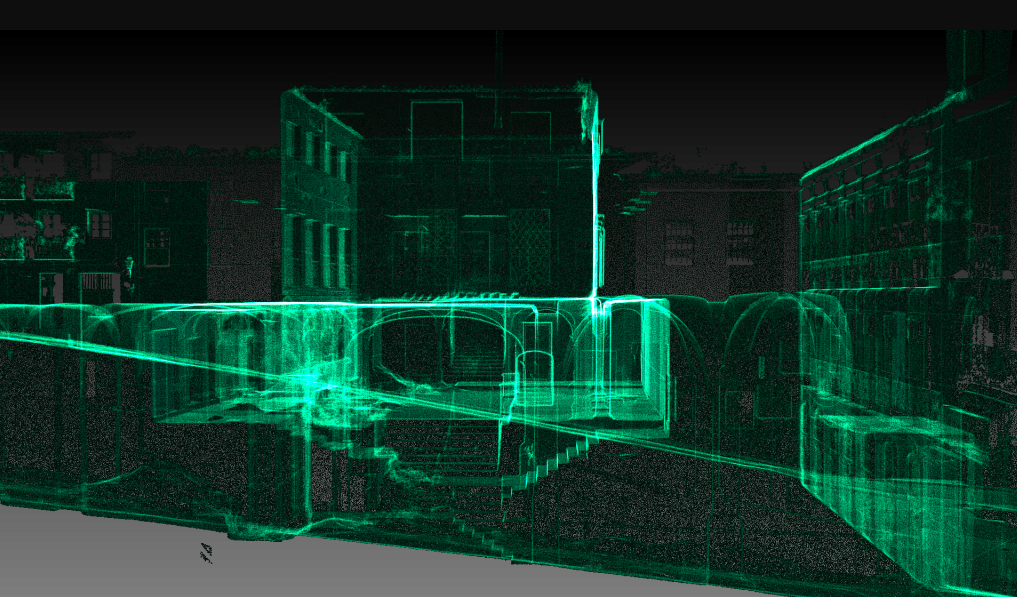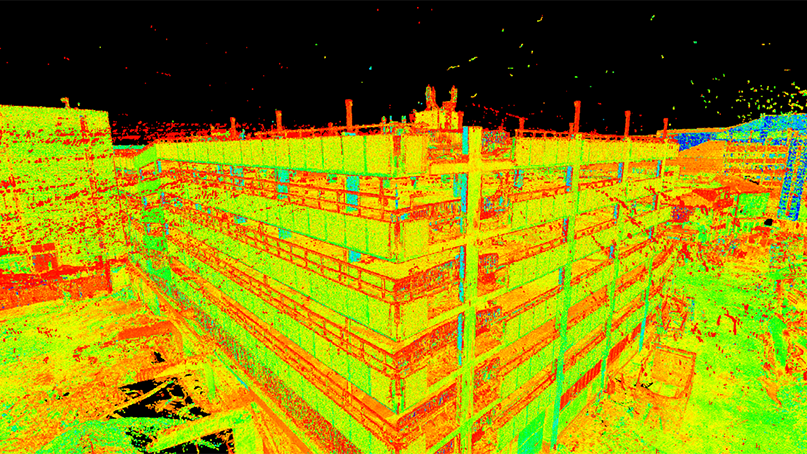Just How 3D Laser Scanning Transforms Architectural Design and Building And Construction Projects
3D laser scanning is transforming the landscape of building layout and building and construction. This modern technology provides exceptional accuracy in catching existing atmospheres, which assists in much better task planning and execution. It decreases errors while enhancing effectiveness in numerous phases of advancement. The implications for cooperation among engineers, engineers, and other stakeholders are significant. These innovations unlock to brand-new design possibilities and ingenious solutions. What lies ahead for this progressing modern technology?
The Fundamentals of 3D Laser Scanning Modern Technology
3D laser scanning modern technology may appear facility, its core principles are uncomplicated and transformative for building style. This innovation employs laser beam of lights to record specific dimensions of physical frameworks, creating an in-depth factor cloud that stands for the scanned setting. A laser scanner produces rapid pulses of light, gauging the moment it takes for the light to return, which permits the computation of ranges with impressive precision.
The resulting point cloud can be exchanged a 3D version, providing engineers with invaluable visual information. This design makes it possible for professionals to adjust and evaluate design components within their jobs, permitting for innovative options and enhanced visualization. By utilizing 3D laser scanning, architects can much better recognize the current conditions of a site, guaranteeing that brand-new layouts harmonize with their environments. This assimilation of innovation into building style marks a significant innovation, promoting creativity and accuracy in the area.

Enhancing Accuracy and Performance in Architectural Projects
As architectural jobs significantly demand accuracy and speed, 3D laser scanning becomes a pivotal tool in boosting both precision and performance. This modern technology catches numerous data points in a quick duration, developing accurate and in-depth 3D models of existing structures. The ability to get precise dimensions reduces the threat of errors during the design stage, allowing designers to envision their tasks with unparalleled quality.
The rapid information collection process reduces the time invested on-site, allowing groups to focus on evaluation and design renovations. With real-time information schedule, adjustments can be made quickly, advertising an extra streamlined process. The combination of 3D laser scanning into architectural methods not just enhances dimension precision but also enhances the general task timeline, promoting quicker decision-making. In an industry where accuracy is essential, this technology stands as a transformative pressure, boosting the standards of building style and construction jobs.
Improving Collaboration Amongst Stakeholders
While conventional architectural procedures typically include fragmented interaction amongst stakeholders, 3D laser scanning cultivates a much more natural collective atmosphere. By supplying precise, high-resolution data, this modern technology enables engineers, engineers, clients, and contractors to run from a unified point of recommendation. The in-depth visualizations created with laser scanning eliminate misinterpretations and uncertainties, guaranteeing that all parties have access to the very same information.
This transparency improves decision-making and motivates timely responses, as stakeholders can quickly visualize layout aspects and spatial relationships. Furthermore, the combination of 3D scanning information into Structure Info Modeling (BIM) systems even more improves cooperation, permitting for real-time updates and modifications. Such smooth interaction not just reduces problems however likewise accelerates project timelines, as all stakeholders remain straightened throughout the design and building and construction phases. Ultimately, 3D laser scanning changes standard workflows into a much more efficient and joint process, benefiting all parties entailed.
Opening Innovative Opportunities in Style
By making it possible for engineers to picture complex spatial connections and elaborate information, 3D laser scanning discloses creative possibilities in style. This modern technology allows for precise mapping of existing atmospheres, allowing architects to discover innovative concepts that could have previously appeared impractical. With extremely exact data, designers can experiment with unique forms and a fantastic read products, pushing the boundaries of conventional style.
Moreover, the integration of 3D laser scanning into the design procedure fosters collaboration among multidisciplinary teams, encouraging the exchange of ideas and enhancing creative thinking. The in-depth visualizations created by this technology not only help in determining potential layout challenges however also inspire options that may not have been taken into consideration. As an outcome, architects can produce a lot more engaging and vibrant spaces that reverberate with users while fulfilling functional needs. Ultimately, 3D laser scanning changes the building landscape, equipping designers to realize their visions with unprecedented precision and imagination.
The Future of 3D Laser Scanning in Architecture and Construction
The assimilation of 3D laser scanning right into building layout not only boosts imagination but also establishes the stage for its progressing duty in the future of architecture and building and construction. As innovation breakthroughs, the accuracy and effectiveness of laser scanning will remain to enhance, enabling engineers and contractors to create a lot more complicated layouts with precision - 3D Scanning. The use of this technology in real-time information collection will certainly promote far better decision-making, lowering mistakes and enhancing operations
Future applications may consist of virtual and increased truth combinations, enabling stakeholders to picture tasks in immersive settings. In enhancement, as sustainability comes to be a concern, 3D laser scanning will certainly sustain the development of energy-efficient styles by giving in-depth insights into existing frameworks. As partnership among various disciplines comes to be more necessary, the capacity to share accurate 3D models will foster innovation and boost job end results. Eventually, 3D laser scanning will certainly redefine standards in building style and construction practices.
Frequently Asked Inquiries
What Is the Expense of Implementing 3D Laser Scanning Modern Technology?

How much time Does a Typical 3D Laser Scanning Project Take?
A common 3D laser scanning project can take anywhere from a couple of hours to several days, relying on factors such as the task's dimension, complexity, and the level of information required for precise information capture.
What Sorts Of Projects Advantage Most From 3D Laser Scanning?
3D laser scanning advantages various projects, particularly massive buildings, historical repairs, and complex renovations. It improves precision in dimensions, minimizes mistakes, and offers thorough information vital for efficient preparation and execution in architectural style and building and construction.

Are There Specific Software Application Programs Required for 3D Laser Scans?
Yes, certain software application are crucial for refining 3D laser scans. 3D Scanning. Popular options consist of Autodesk ReCap, Faro Scene, and Leica Cyclone, each offering one-of-a-kind functions customized for envisioning and examining scanned data efficiently in numerous projects
Exactly How Does 3D Laser Scanning Influence Environmental Sustainability in Building And Construction?
3D laser scanning boosts environmental sustainability in construction by reducing product waste, allowing accurate dimensions, and promoting reliable source use. This technology enables far better planning, minimizing the environmental impact of building projects via enhanced accuracy and efficiency.
3D laser scanning is transforming the landscape of architectural layout and building. 3D try here laser scanning technology may appear facility, its core principles are simple and transformative for architectural style. By making it possible for architects to picture complicated spatial connections and detailed information, 3D laser scanning exposes innovative possibilities in layout. The assimilation of 3D laser scanning right into the style process promotes cooperation among multidisciplinary groups, urging the exchange of concepts and enhancing creativity. The combination of 3D laser scanning into architectural style not just boosts creative thinking but also establishes the stage for its progressing function in the future of style and construction.